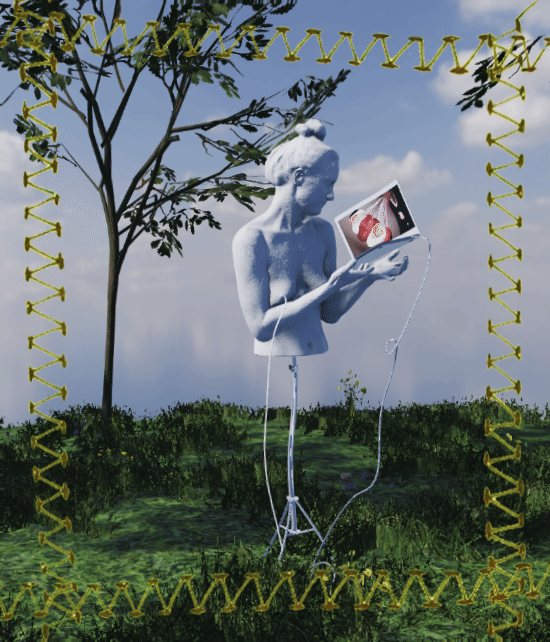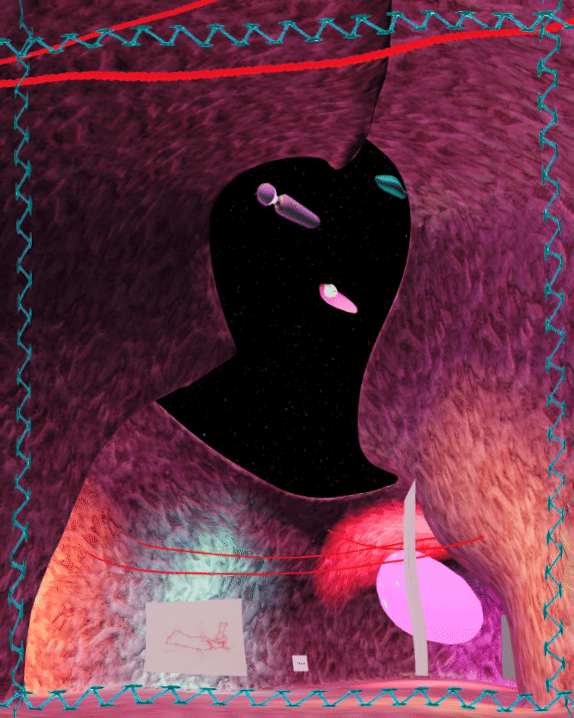
glynnis reed: beloved, vesica piscis, & watermelon woman
artist info & virtual world themes
glynnis reed (she/they) is an accomplished professional visual artist, art educator, and emerging scholar. She has exhibited her artwork widely in the U.S. and internationally. She is a recipient of the Visions of a New California Award and other grants and awards. She is currently a dual title Ph.D. degree candidate in Art Education and Women’s, Gender, and Sexuality Studies at The Pennsylvania State University. Reed is motivated by the capacity of art to build worlds and act as a potential healing and liberating force. Her scholarly activities weave multiple strands of study that include artmaking practices, African spirituality, disability studies, and autoethnography to bring greater awareness of the value of the lives and contributions of intersectionally marginalized individuals to the field of art. Reed has two decades of experience as an art educator, working with diverse students as a teaching artist, K-12 art teacher, museum educator, and as a university instructor. She is a co-editor and contributor to the book BIPOC Alliances: Building Communities and Curricula and author of the book James Baldwin: Novelist and Critic.
The virtual world invites encounters with Reed’s explorations of Black feminist thought, visual reclamation, Afro-diasporic spiritualities, healing/recovery, and Black queer identities/experiences.
instagram: @glynnisreedstudio
contact: reedglynnis@gmail.com
how to explore the virtual worlds:
Currently, the virtual worlds are most compatible with Chrome and Firefox browsers (the interactive elements may not work with Safari). The worlds are also only compatible with desktop/laptop devices currently.
Navigate the environments using the W, A, S, D keys (to move forward, left, back, and right, respectively). Use the mouse to turn and look around/up and down (like the navigation of a PC game).
Press the escape key to move your mouse outside
of the environment window.
Each virtual world contains audio elements.
To activate the artist audio stories and caption videos, “walk” up to the pink exhibition icons, and the audio/visual content will begin.
You can pause the interactive content by moving away from the area, then return and resume.
participatory prompts
What does it mean to reclaim symbols?
Why does reclamation matter to Black feminisms?How are anti-Black stereotypes tied to sexual/reproductive violence?
Are there stories, knowledges, or practices that you look toward to understand your personal experiences or to heal?
Share your responses on the exhibition Discord or with peers.
attributions/credits in virtual world
Quilt on wall/ceiling: Lucy T. Pettyway of Gee’s Bend, Housetop and Bricklayer with Bars quilt, c. 1955. Photo by Regan Vercruysse.
Quilt on bedspread: Edna Patterson-Petty, Community Freedom Quilt, c. 2009. Photo by Lynn deLearie.
Quote on wall: from Audre Lorde’s Zami: A New Spelling of My Name (1982)
Models: Sousinho, Landscape picture frames (2022)
recommended readings & resources
Patricia Hill Collins, Black feminist thought: Knowledge, consciousness, and the politics of Empowerment (1990)
Toni Morrison, Beloved (1987)
Loretta Ross & Rickie Solinger, Reproductive Justice: An Introduction (2017)
M. Jacqui Alexander, “Pedagogies of the Sacred” in Pedagogies of Crossing: Meditations on Feminism, Sexual Politics, Memory, and the Sacred (2006)
Audre Lorde, Zami: A New Spelling of My Name (1982)
Audre Lorde, Sister Outsider: Essays and Speeches (1984)
Deborah Willis, Black Venus 2010: They Called Her "Hottentot" (2010)








